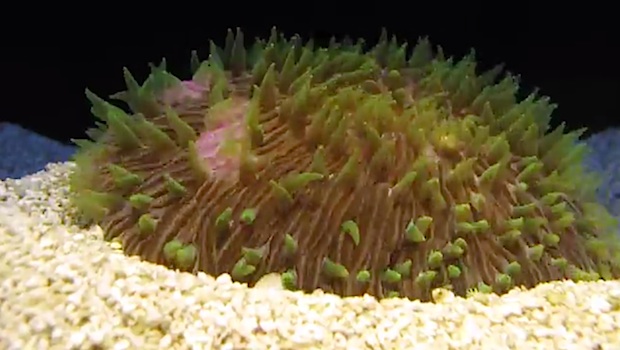We tend to think of corals as almost exclusively benthic, non motile creatures, so its fascinating when we are reminded that corals are animals too. While 99% of the corals we like to play with and culture are colonial and grow attached to the substrate, a few of them live solitary and free living on the reef, and these corals have developed ingenious ways to move.
The species of disc, plate and tongue corals in the large Fungiidae family are the archetype of free-living corals in our aquarium centric minds. These flat corals spend plenty of time living on flat surfaces, rarely in substrate the way that we keep them, but being part of the reef they run the risk of sometimes being buried in sand, or flipped upside down.
Have no fear for the disc coral in peril because these wonderful creatures have developed ingenious ways of pulsing their tissues with inflation in order to move, in order to excavate themselves from burial and even to flip themselves over. For creatures with no brains and the barest inkling of a network of neuron, they are still pretty capable of evaluating their predicament and activating their bodies to achieve a pretty complicated goal, for a creature that only has a manus.
Just as surprising and another aspect of coral movement that we’ve never really considered is the ability for SPS corals to also react to some degree of sedimetnation. This time lapse video shows a plating Montipora in the “Idaho Grape” neighborhood negotiating some sand that has accumulated on its surface.
Whereas the disc corals are a single polyp, the plating Montipora is a colony and it has teeny tiny polyps. Despite their size and colonial nature, the Montipora colony still manages a pretty good effort at slowly but surely shuffling sand grains off of its surface, one grain at a time.



